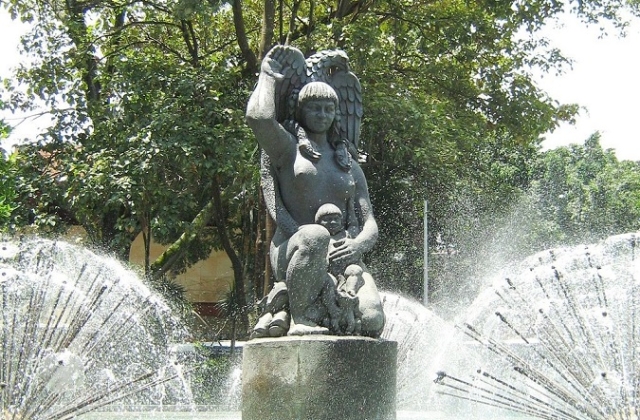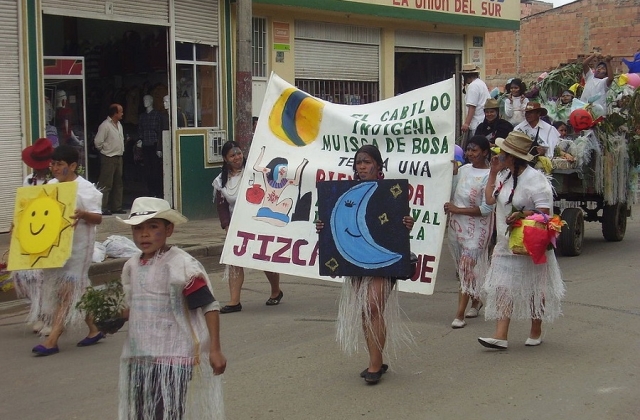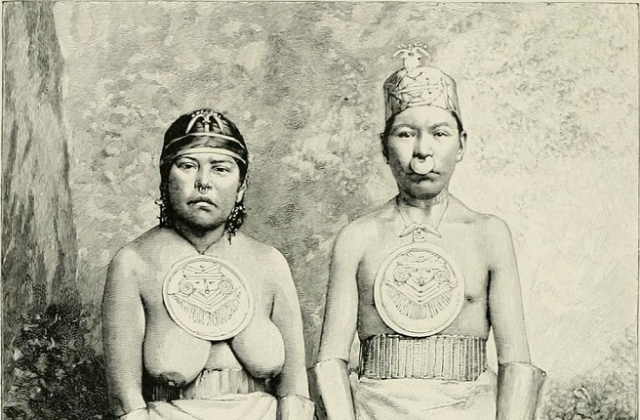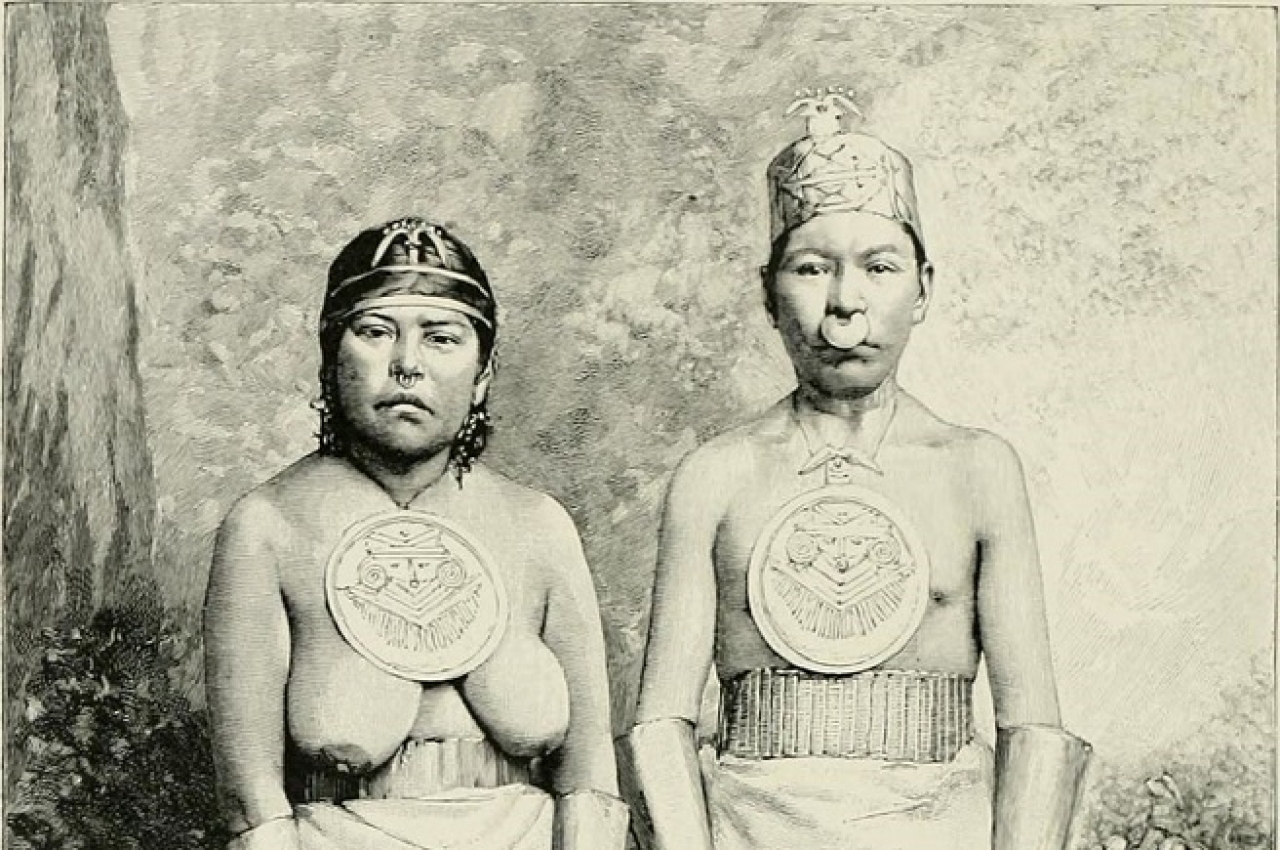Exploring the ancient tribal grounds and sacred locations of Colombia’s Muisca people can be a fascinating part of your adventure tour of Colombia. While hiking the Siecha Lakes with Uncharted Colombia , you can see the fabled location that sparked the legends of El Dorado, which originated with these ancient people, whose ancestors are still living in modern-day Bogotá! Learn about these captivating people and how they contributed to the culture of Colombia.
 photo by Andrew Bertram via Wikipedia Commons
photo by Andrew Bertram via Wikipedia Commons
An Ancient Tribe
The Muisca people were flourishing in Colombia between 600 and 1600 C.E., but there is evidence of them in the region as far back as 1500 B.C.E. They were transitioning at that time from hunter-gatherers to farmers, like many tribes at that time. Their people were found from what is now the city of Bogotá, through the surrounding high mountains and valleys of the Andes. Their civilization was just as advanced and thriving as the more famous Inca, Aztec, and Mayan tribes, with a hierarchy in leadership, developed religious beliefs, and advanced farming, craft and trade practices. The Muisca spoke a variation of the Chibcha language, which historians believe originated in Central America, and so the Muisca are sometimes also known as the Chibcha people.
 photo by I, SajoR via Wikimedia Commons
photo by I, SajoR via Wikimedia Commons
A Mystical Religion
Religious beliefs and practices were central to the life and community of the Muisca tribes. Sun worship was a fundamental component of their faith and can be attributed to their fascination and skill with gold. The origin of the El Dorado myth took root from the practice of the Muisca of covering their future chief with gold dust and floating him into the center of the lake on a gold raft where he would offer gold and emeralds to the gods, and be deemed the new leader. Several deities were central to the faith of the ancient Muisca, but the primary gods were Suéá, the sun god, and father of the Muisca, and Bachué, the water goddess and mother of the people. Since both sun and water are critical components of successful farming and survival, it’s only natural that these gods were revered and efforts would be made to appease them for a successful harvest.
 photo by Arturo Aparicio via Wikipedia Commons
photo by Arturo Aparicio via Wikipedia Commons
A 21st Century Legacy
Colonization by the Spanish has had a profound and devastating effect on the Muisca. Once a massive people, numbering 500,000, they are now found in three remaining councils: in Cota, Chía, and Sesquilé with a population of 2,318. There are additional populations in the capital region numbering 5,186, and a small community of about 1,573 in the municipalities of Suba and Bosa. Though their numbers are much diminished, the Muisca continue to have an impact, fighting to preserve sacred spaces and natural resources, such as opposing the drying of the Tibabuyes wetland. They have also started a publication called Suati Magazine (which means “The Song of the Sun”). This publication features poetry, literature, and essays about Muisca culture and its people.
 photo by Internet Archive Book Images via Wikimedia Commons
photo by Internet Archive Book Images via Wikimedia Commons
Experience the life and art of the Muisca people, and learn about their past and future on a private tour of Colombia. Many of Uncharted Colombia’s treks and tours begin in Bogotá, where the largest population of Muisca reside, and where many of their artifacts can be found in local museums, like the dazzling Museo del Oro. Colombia is waiting.

 photo by Internet Archive Book Images via Wikimedia Commons
photo by Internet Archive Book Images via Wikimedia Commons